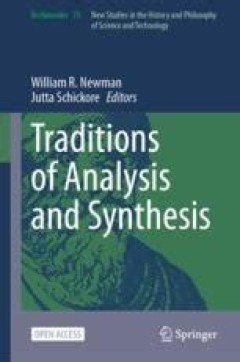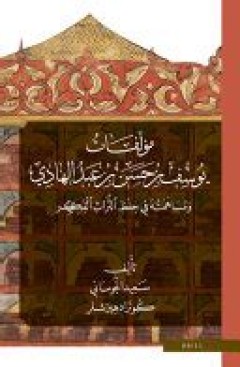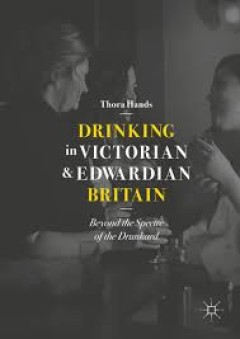Filter by

Translation und Marginalisierung = Intersektionale Perspektiven auf Übersetz…
Übersetzungen spiegeln und bestätigen die Normen der zielkulturellen Mehrheitsgesellschaft und ihrer machthabenden Instanzen, wohingegen Anliegen von Minderheiten meist unberücksichtigt bleiben. Diesen oft übersehenen Zusammenhang zwischen Translation und Marginalisierung leuchtet der interdisziplinäre Open Access-Band für die Frühe Neuzeit systematisch aus und rückt jene Menschen, Figu…
- Edition
- -
- ISBN/ISSN
- 9783662694695
- Collation
- XII, 326 hlm; ill., lamp.,
- Series Title
- -
- Call Number
- -

Traditions of Analysis and Synthesis
This open access book provides a fresh perspective on analysis and synthesis across several areas of inquiry. The two operations form a primary basis of modern laboratory science, ranging from the spectrographic analysis used in practically every scientific discipline today, to the naming of entire disciplines, such as synthetic organic chemistry. Despite their acknowledged significance, howeve…
- Edition
- -
- ISBN/ISSN
- 9783031763984
- Collation
- VII, 402 hlm; ill., lamp.,
- Series Title
- -
- Call Number
- -

Tourism as Memory-Making = Russian Tourism in the Shadow of Empire
Until recently the Russian Federation used to be one of the largest markets for outbound travel. Among Russians’ favourite destinations were cities that used to be part of the Russian Empire and the Soviet Union, and are now located in the independent nation-states bordering Russia. This open access book provides an empirically rich and conceptually sophisticated account of the mnemonic inter…
- Edition
- -
- ISBN/ISSN
- 9783031837388
- Collation
- XV, 221 hlm,: ill, lamp; 21 cm
- Series Title
- -
- Call Number
- -

The Resilience of the Hungarian Legal System since 2010 = A Failed Resilience?
- Edition
- -
- ISBN/ISSN
- 9783031704512
- Collation
- VIII, 240 hlm ill; lamp
- Series Title
- -
- Call Number
- -
- Edition
- -
- ISBN/ISSN
- 9783031704512
- Collation
- VIII, 240 hlm ill; lamp
- Series Title
- -
- Call Number
- -

The Nexus Between Legal Pluralism and Inclusive Finance = Insights from Ethio…
This open access book provides detailed information on informal credit markets in Africa and how various legal systems affect these markets. Laws that impose strict formalism exclude many people from the financial system. The lessons learned from the informal credit markets in Ethiopia and South Africa indicate that pluralism offers better opportunities for people to access affordable and susta…
- Edition
- -
- ISBN/ISSN
- 9783031716539
- Collation
- VII, 160 hlm; ill., lamp.,
- Series Title
- -
- Call Number
- -

The Necro-President = Trump, MAGA, and the Decline of the American Republic
This Brief develops the necro-president as a figure through which the collapse of American political life becomes visible. In our present moment of political upheaval, the necro-president reflects how death, not law or the people, has come to shape the meaning of the presidency. The office, once imagined as a source of vitality and democratic promise, now signals exhaustion, spectacle, and s…
- Edition
- -
- ISBN/ISSN
- 9783031947292
- Collation
- XIII, 62 hlm; ill., lamp.,
- Series Title
- -
- Call Number
- -

The Ndebele, Frank Oates, and Knowledge Production in the 1870s = Encounters …
This open access book addresses a question fundamental to the histories of empire and Africa: at the point of the colonial encounter, how was knowledge made? How did different communities, with little or no prior contact, construct meaning about one another? Amidst huge changes in the politics and economics of a continent, on the cusp of almost complete colonization at the hands of European pow…
- Edition
- -
- ISBN/ISSN
- 9783031759635
- Collation
- IX, 125 hlm; ill., lamp.,
- Series Title
- -
- Call Number
- -

مؤلّفات يوسف بن حسن بن عبد الهادي ومساهمته…
On the basis of a newly discovered manuscript this book offers the most comprehensive bibliography of the enormous output of the fifteenth-century scholar Ibn ʿAbd al-Hādī – enlarging our view of his scholarly contribution and correcting numerous mistakes in this regard. This book is thus essential reading for all those interested in the writerly world of Damascus and the scholarly world o…
- Edition
- -
- ISBN/ISSN
- 9789004462922
- Collation
- 580 hlm; ill., lamp.,
- Series Title
- الحضارة العربية والإسلامية, Volume: 02
- Call Number
- -

Writing Tamil Catholicism = Literature, Persuasion and Devotion in the Eighte…
In Writing Tamil Catholicism: Literature, Persuasion and Devotion in the Eighteenth Century, Margherita Trento explores the process by which the Jesuit missionary Costanzo Giuseppe Beschi (1680-1747), in collaboration with a group of local lay elites identified by their profession as catechists, chose Tamil poetry as the social and political language of Catholicism in eighteenth-century South I…
- Edition
- -
- ISBN/ISSN
- 9789004511620
- Collation
- 372 hlm; ill., lamp.,
- Series Title
- Philological Encounters Monographs, Volume: 3
- Call Number
- -

Drinking in Victorian and Edwardian Britain : Beyond the Spectre of the Drunkard
This open access book surveys drinking in Britain between the Licensing Act of 1869 and the wartime regulations imposed on alcohol production and consumption after 1914. This was a period marked by the expansion of the drink industry and by increasingly restrictive licensing laws. Politics and commerce co-existed with moral and medical concerns about drunkenness and combined, these factors push…
- Edition
- -
- ISBN/ISSN
- 9783319929644
- Collation
- -
- Series Title
- -
- Call Number
- -
 Computer Science, Information & General Works
Computer Science, Information & General Works  Philosophy & Psychology
Philosophy & Psychology  Religion
Religion  Social Sciences
Social Sciences  Language
Language  Pure Science
Pure Science  Applied Sciences
Applied Sciences  Art & Recreation
Art & Recreation  Literature
Literature  History & Geography
History & Geography